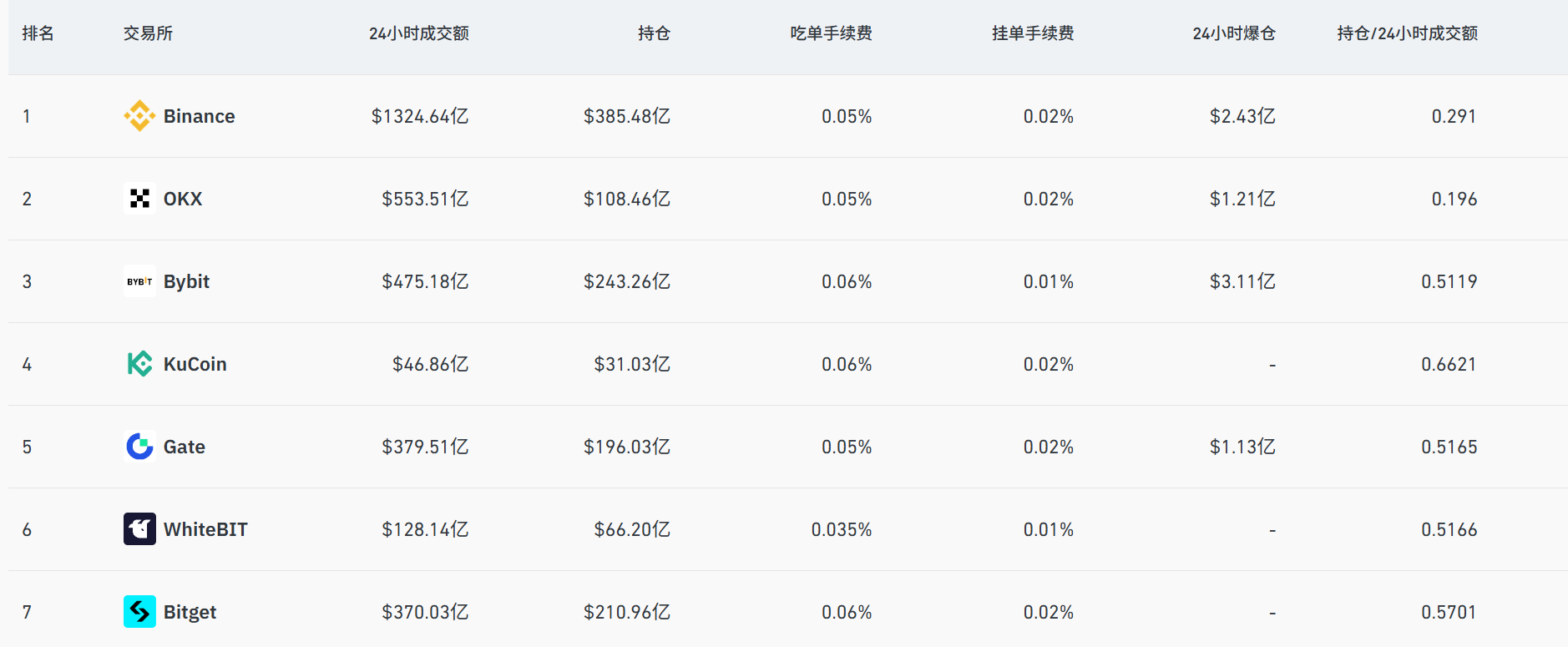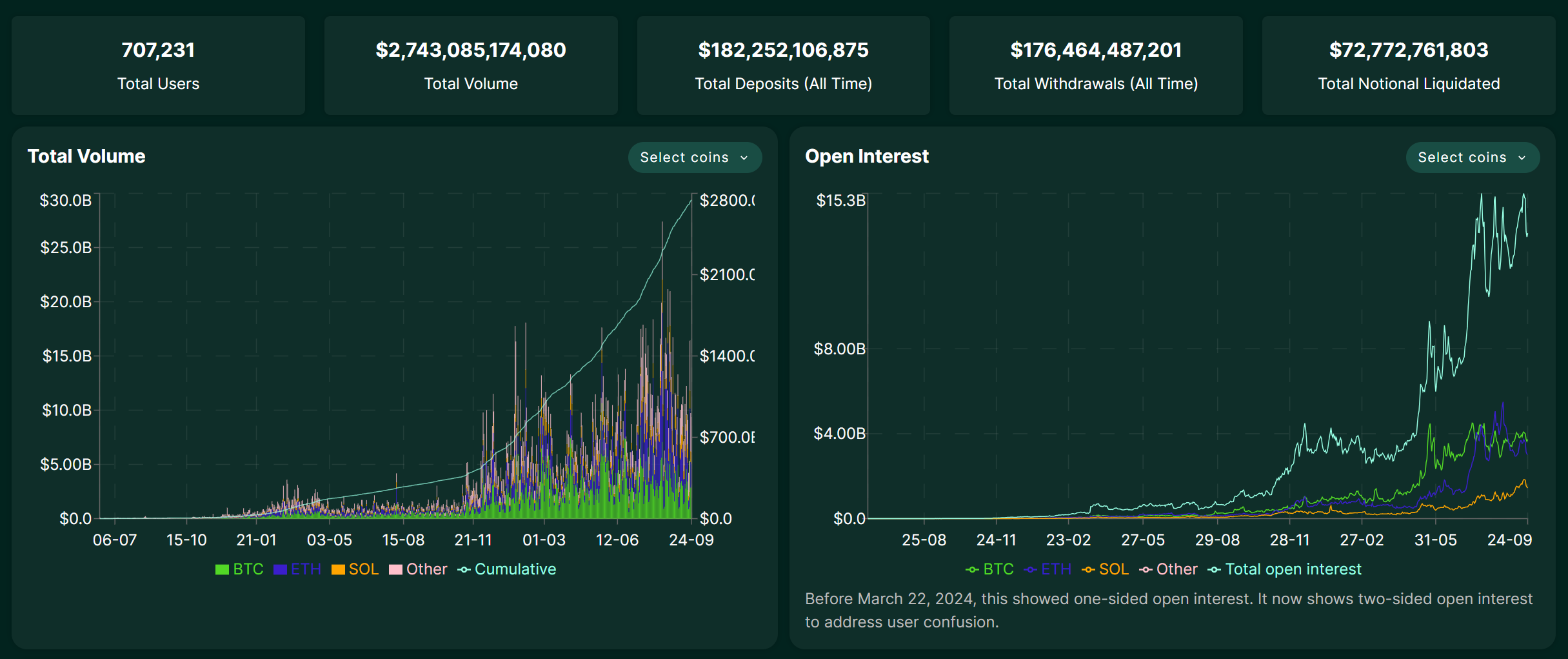Hyperliquid may just be the beginning.
Written by: imToken
"Derivatives are the holy grail of DeFi." The consensus that on-chain perpetual protocols are the ticket to the second half of DeFi was reached by the market as early as 2020.
However, the reality is that for the past five years, perpetual DEXs have struggled to balance "performance" and "decentralization" due to limitations in performance and cost. During this time, the AMM model represented by GMX achieved permissionless trading, but it still struggled to compete with CEXs in terms of trading speed, slippage, and depth.
It wasn't until the emergence of Hyperliquid, with its unique on-chain order book architecture, that a CEX-comparable smooth experience was achieved on a fully self-custodied blockchain. The recent passing of the HIP-3 proposal has further broken down the walls between Crypto and TradFi, opening up infinite possibilities for trading more assets on-chain.
This article will also take you deep into the operational mechanisms and sources of revenue of Hyperliquid, objectively analyze its potential risks, and explore the revolutionary variables it brings to the DeFi derivatives track.
The Cycle of the Perp DEX Track
Leverage is the core language of finance. In mature financial markets, derivatives trading far exceeds spot trading in terms of liquidity, capital volume, and trading scale. After all, through margin and leverage mechanisms, limited funds can leverage a larger market volume to meet diverse needs such as hedging, speculation, and yield management.
The Crypto world has at least confirmed this rule in the CEX field. As early as 2020, derivatives trading represented by contract futures began to replace spot trading and gradually became the dominant market.
According to Coinglass data, in the past 24 hours, the daily trading volume of top CEX contract futures has reached hundreds of billions of dollars, with Binance exceeding 130 billion dollars.

Source: Coinglass
In contrast, the on-chain perp DEX has been a long road over the past five years. During this time, dYdX explored a more centralized experience through an on-chain order book but faced challenges in balancing performance and decentralization. The AMM model represented by GMX achieved permissionless trading but still fell short of CEXs in terms of trading speed, slippage, and depth.
In fact, the sudden collapse of FTX in early November 2022 temporarily stimulated a surge in trading volume and new user numbers for on-chain derivatives protocols like GMX and dYdX. However, constrained by market conditions, on-chain trading performance, trading depth, and the variety of trading types, the entire track quickly fell back into silence.
To be realistic, once users discover that on-chain trading carries the same liquidation risks but cannot achieve CEX-level liquidity and experience, their willingness to migrate naturally drops to zero.
Therefore, the key issue is not whether "on-chain derivatives have demand," but rather the persistent lack of a product form that can provide value that CEXs cannot replace while also solving performance bottlenecks.
The market gap is very clear: DeFi needs a perp DEX protocol that can truly deliver a CEX-level experience.
It is against this backdrop that the emergence of Hyperliquid brings new variables to the entire track. Interestingly, although Hyperliquid officially entered the public eye this year, it was actually launched in 2023 and has been iterating and accumulating over the past two years.
Is Hyperliquid the Ultimate Form of "On-Chain CEX"?
Faced with the long-standing dilemma of "performance vs. decentralization" in the perp DEX track, Hyperliquid's goal is straightforward—directly replicate the smooth experience of CEXs on-chain.
To achieve this, it chose an aggressive path, building a dedicated L1 application chain based on the Arbitrum Orbit technology stack, without relying on the performance constraints of existing public chains, and deploying a fully on-chain order book and matching engine.
This means that from order placement, matching to settlement, all trading processes occur transparently on-chain while achieving millisecond-level processing speeds. Therefore, from an architectural perspective, Hyperliquid resembles a "fully on-chain version" of dYdX, no longer relying on any off-chain matching, with the ultimate goal of becoming the "on-chain CEX."
The effects of this aggressive route have been immediate.
Since the beginning of this year, Hyperliquid's daily trading volume has been on the rise, reaching as high as 20 billion dollars. As of September 25, 2025, the cumulative total trading volume has exceeded 2.7 trillion dollars, and its revenue scale even surpasses that of many second-tier CEXs. This fully demonstrates that on-chain derivatives are not lacking in demand but rather in truly DeFi-compatible product forms.

Source: Hyperliquid
Of course, such strong growth has quickly brought it ecological attraction. Recently, the USDH issuance rights bidding war sparked by Hyperliquid attracted heavyweight players like Circle, Paxos, and Frax Finance to publicly compete (see the extended reading "From Hyperliquid's USDH Becoming a Hot Commodity: Where is the Pivot of DeFi Stablecoins?"), which is the best example.
However, merely replicating the CEX experience is not the endpoint for Hyperliquid. The recently passed HIP-3 proposal introduced a permissionless, developer-deployed perpetual contract market into its core infrastructure. Previously, only the core team could launch trading pairs, but now any user who stakes 1 million HYPE can directly deploy their own market on-chain.
In short, HIP-3 allows for the creation and launch of any asset's derivatives market on Hyperliquid without permission. This completely breaks the limitation that past Perp DEXs could only trade mainstream cryptocurrencies. Under the framework of HIP-3, in the future, we may see on Hyperliquid:
Stock markets: Trading top global financial market assets like Tesla (TSLA), Apple (AAPL);
Commodities and Forex: Trading traditional financial products like gold (XAU), silver (XAG), or Euro/Dollar (EUR/USD);
Prediction markets: Betting on various events, such as "Will the Fed cut interest rates next?" or "What will be the floor price of a certain blue-chip NFT?";
This will undoubtedly greatly expand Hyperliquid's asset categories and potential user base, blurring the boundaries between DeFi and TradFi. In other words, it allows any global user to access core assets and financial plays of the traditional world in a decentralized, permissionless manner.
What is the Other Side of the Coin?
However, while Hyperliquid's high performance and innovative model are exciting, there are also significant risks behind it, especially as it has not yet undergone large-scale crisis "stress tests."
Cross-chain bridge issues are at the forefront, which is the most discussed topic in the community. Hyperliquid connects to the mainnet through a cross-chain bridge controlled by a 3/4 multi-signature, which constitutes a centralized trust node. If these signatures encounter issues due to accidents (such as lost private keys) or malicious actions (such as collusion), it will directly threaten the asset security of all users in the cross-chain bridge.
Next, there is the treasury strategy risk, as the returns from the HLP treasury are not guaranteed. If the market-making strategy incurs losses under specific market conditions, the principal deposited in the treasury will also decrease, meaning users must bear the risk of strategy failure while enjoying high return expectations.
As an on-chain protocol, Hyperliquid also faces conventional DeFi risks such as smart contract vulnerabilities, oracle price feed errors, and user liquidations in leveraged trading. In fact, in recent months, the platform has experienced multiple large-scale extreme liquidation events due to malicious manipulation of the prices of certain low-market-cap tokens, exposing its need for improvement in risk control and market regulation.
Moreover, objectively speaking, there is another issue that many people have not considered, which is that as a rapidly growing platform, Hyperliquid has yet to undergo large-scale compliance reviews or serious security incidents. In a phase of rapid expansion, risks are often overshadowed by the halo of rapid growth.
Overall, the story of perp DEXs is far from over.
Hyperliquid is just the beginning. Its rapid rise not only proves the real demand for on-chain derivatives but also demonstrates the feasibility of breaking performance bottlenecks through architectural innovation. HIP-3 has further expanded the imagination to stocks, gold, forex, and even prediction markets, truly blurring the boundaries between DeFi and TradFi for the first time.
Although high returns and high risks always go hand in hand, from a macro perspective, the attractiveness of the DeFi derivatives track will not diminish due to the risks of a single project. It is not ruled out that new projects will emerge to take over Hyperliquid/Aster as the new leaders in on-chain derivatives. Therefore, as long as we believe in the charm and imaginative space of the DeFi ecosystem and derivatives track, we should give enough attention to similar seed players.
Perhaps looking back years later, this will be a brand new historical opportunity.
免责声明:本文章仅代表作者个人观点,不代表本平台的立场和观点。本文章仅供信息分享,不构成对任何人的任何投资建议。用户与作者之间的任何争议,与本平台无关。如网页中刊载的文章或图片涉及侵权,请提供相关的权利证明和身份证明发送邮件到support@aicoin.com,本平台相关工作人员将会进行核查。




